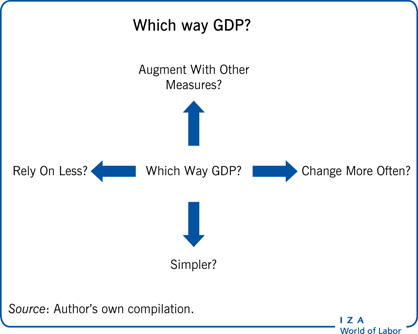Elevator pitch
Gross domestic product (GDP) is the key indicator of the health of an economy and can be easily compared across countries. But it has limitations. GDP tells what is going on today, but does not inform about sustainability of growth. The majority of time is spent in home production, yet the value of this time is not included in GDP. GDP does not measure happiness, so residents can be dissatisfied even when GDP is rising. In addition, GDP does not consider environmental factors, reflect what individuals do outside paid employment, or even measure the current or future potential human capital of a country. Hence, complementary measures may help to show a more comprehensive picture of an economy.

Key findings
Pros
GDP provides a headline number to focus on the economic condition of a country.
GDP is the mainstay of modern macroeconomic analysis and essential to policy creation.
Because GDP conforms to international measures of production, it is an objective indicator that is not subject to national political pressures.
In most cases, GDP uses well-established international accounting principles.
GDP concepts are modified as the economy changes.
Cons
GDP does not capture welfare or human well-being.
GDP may not be a strong basis to predict economic growth in times of high uncertainty.
As international accounting standards are slow to change and require international consensus, GDP is slow to reflect changes in the world.
GDP excludes nonmarket activity, notably human capital creation in that sector.
Important indicators such as ecosystems, pollution, climate change, or green GDP accounts, measures of happiness, sustainability, inequality, or nonmarket accounts are not included in GDP, other than possibly through satellite accounts.